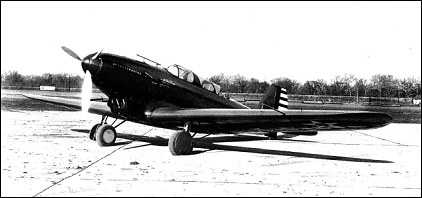 |
Consolidated Y1P-251932 |  |
| FIGHTER | Virtual Aircraft Museum / USA / Consolidated |
 |
The P-25 was built by Consolidated, a manufacturer founded in Buffalo, New York, in 1923 as successor to the Dayton-Wright Airplane Company. The P-25 was externally almost a replica of the Lockheed P-24 but slightly larger and heavier. One of Robert Wood's design engineers moved from Lockheed to Consolidated and retained the goal of creating a fast, two-seat tandem fighter to replace the Berliner-Joyce P-16. The US Army Air Corps in 1932 was sufficiently interested to order two Consolidated Y1P-25 airframes, although the second was soon given the attack function and redesignated Y1A-11. A cantilever low-wing monoplane of all-metal construction (unlike its partly wood Lockheed forbear), the Y1P-25 had retractable landing gear, the familiar Curtiss Conqueror engine, and a rearward-facing machine-gunner. The engine was supercharged, making possible a top speed of 398km/h at 4500m. First flown in 1932, the Y1P-25 crashed on 13 January 1933 and was written off. The Y1A-11 was also lost that same month. But in its short test life the Y1P-25 had shown sufficient promise for the USAAC to seek further development. Indeed, by May 1932 the service had decided to explore the basic design further. The Y1P-27 and Y1P-28 variants, to be powered by Pratt & Whitney Wasp engines of different marks, were seriously contemplated but never built. Four Conqueror-powered service-test machines were completed as P-30s and later machines were redesignated PB-2 (for pursuit, biplace). The basic design, after being allocated several designations, became the principal USAAC two-seat fighter between world wars.
|  COMPANY PROFILE | ||||||||||||||||||||||||||||||||||||||||||||||||||
 |

|
